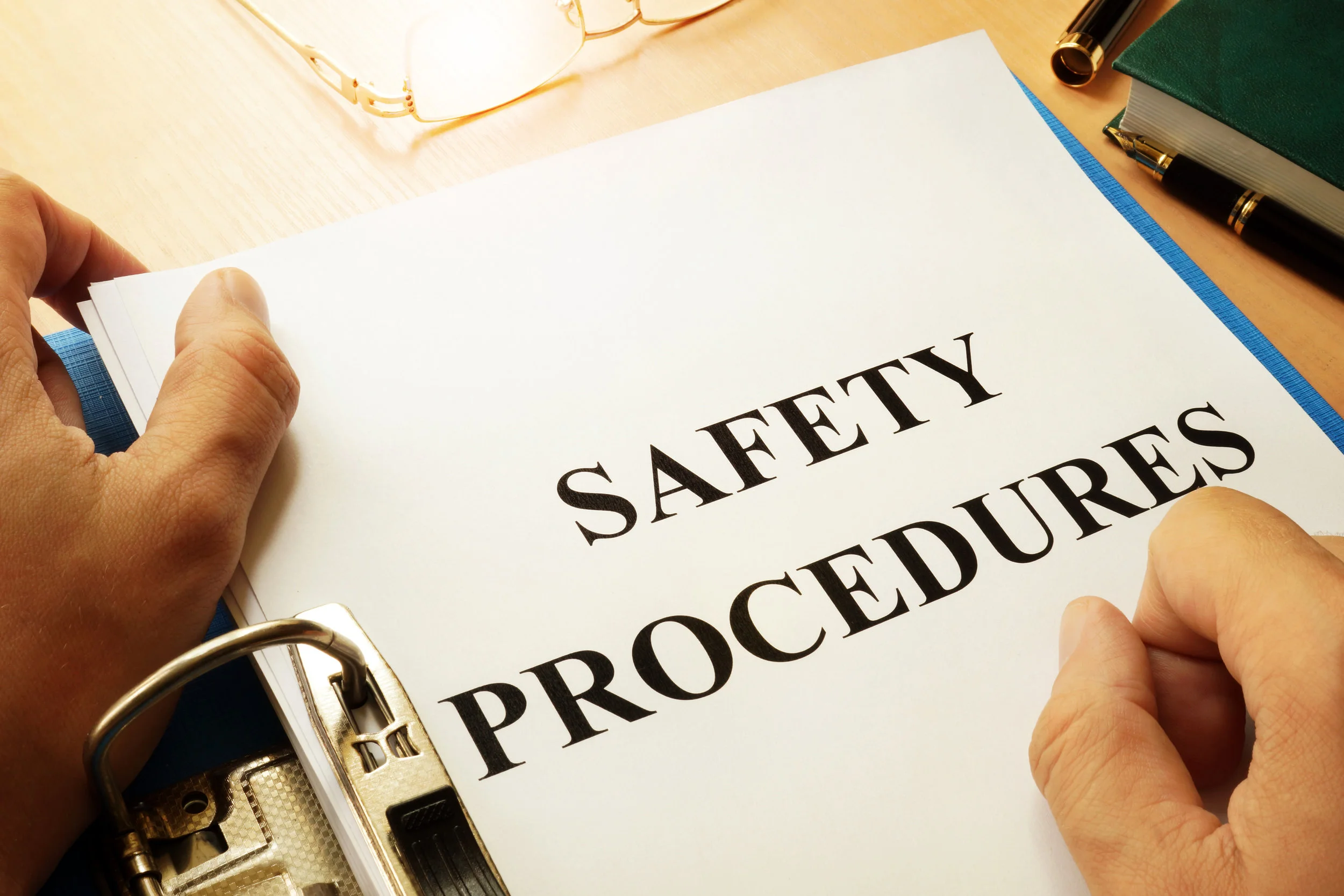
Industry News

4 Essential Tools For Managing Your Company's Risk
Author, Alyssa Burley, Client Services Coordinator, Rancho Mesa Insurance Services, Inc.
Risk Management is the identification, analysis, assessment, control, and avoidance, minimization, or elimination of unacceptable risks. Companies manage their risk through what is known as an Injury and Illness Prevention Program (IIPP). As a business owner, supervisor or manager, there are tools available to assist in risk management endeavors.
Author, Alyssa Burley, Client Services Coordinator, Rancho Mesa Insurance Services, Inc.
Risk Management is the identification, analysis, assessment, control, and avoidance, minimization, or elimination of unacceptable risks. Companies manage their risk through what is known as an Injury and Illness Prevention Program (IIPP). As a business owner, supervisor or manager, there are tools available to assist in risk management endeavors.
“Injury and illness prevention programs are systems that can substantially reduce the number and severity of workplace injuries and illnesses while reducing costs to employers,” according to OSHA.
Below are four tools your company can use to proactively manage the IIPP.
Training
Access to a robust bilingual database of both online and offline trainings is essential to ensuring employees are up to date on required and supplemental training. Weekly training shorts (e.g., tailgate topics, safety shorts) that are industry specific and relevant keeps employees focused on safety and reinforces a safety culture within the company.
“Training in the safe way for workers to do their jobs well is an investment that will pay back over and over again in fewer injuries and illnesses, better morale, lower insurance premiums and more,” according to OSHA’s training requirements document.
Tracking of Employee Training
Maintaining employee training documentation is vital for ensuring employees are trained on required topics and in regular intervals. Having an electronic tracking system can streamline the process and allow management to generate reports and search records from any device with internet access.
According to OSHA’s documentation, “it is a good idea to keep a record of all safety and health training. Documentation can also supply an answer to one of the first questions an incident investigator will ask: ‘Did the employee receive adequate training to do the job?’”
To learn more about OSHA training requirements, review Training Requirements in OSHA Standards.
Incident Tracking and OSHA Reporting
Documenting near-misses, injuries, and accidents can keep your company OSHA compliant while helping to prevent incidents in the future. Making sure supervisors complete a thorough investigation and collect witness statements at the time of the incident can also ensure hazards are addressed immediately. Electronic documentation of a near-miss or incident creates a standardization of data that is collected, allows for trend reporting, and electronic submission of OSHA 300A Summary data.
Written Job Hazard Analysis
A job hazard analysis (JHA) identifies the dangers of specific tasks in order to reduce the risk of injury to workers. JHAs are important for managing risk because they help to identify hazards which can be reduced or eliminated before an employee is hurt. Once a JHA is established, management should observe and document their findings and any remedies that are made.
Risk Management starts with a written IIPP, but it is up to management to implement and utilize the available tools to make it effective. Contact Rancho Mesa’s Client Services Department at (619) 438-6869 to learn more about the Risk Management Center platform.
Developing an Effective Injury and Illness Prevention Program (IIPP)
Author, Daniel Frazee, Executive Vice President, Rancho Mesa Insurance Services, Inc.
If you have operated a business in the state of California for any period of time, you have very likely heard about or run across the acronym IIPP. Wherever you stand with your knowledge within the world of safety, injury, and illness, it is important for every organization to understand the mandatory parts of an IIPP. What is often overlooked is how developing an effective safety program can create positive change and truly impact your bottom line.
Author, Daniel Frazee, Executive Vice President, Rancho Mesa Insurance Services, Inc.
If you have operated a business in the state of California for any period of time, you have very likely heard about or run across the acronym IIPP. Wherever you stand with your knowledge within the world of safety, injury, and illness, it is important for every organization to understand the mandatory parts of an IIPP. What is often overlooked is how developing an effective safety program can create positive change and truly impact your bottom line.
What is an IIPP?
An Injury and Illness Prevention Program (IIPP) is a required written workplace safety document that must be maintained by California employers (Title 8 of the CA code of regulations, section 3203). These regulations require eight (8) specific elements that are summarized below. In many cases, this process requires direct questions about how the company currently views and manages safety. Answering these questions will begin to highlight the positive aspects of what already is currently in place and shed light on areas that need improvement.
Responsibility
Clarifying the name, title and contact information for the person(s) with overall responsibility for the IIPP is a critical first step to this process. Making the IIPP available and accessible at all business locations becomes the first task of the “responsible person.”
Compliance
What is the content of the company’s safety meetings? Who runs those meetings? How do you discipline employees if they do not follow safety guidelines? How might the company recognize or reward their employees for safe practices or behavior?
Communication
Safety meetings are held on what type of schedule within your organization? How can employees anonymously notify management of safety and health concerns without fear of reprisal? Is there a safety committee in place that provides communication to all employees? If not, who would be considered as important members of that committee?
Hazard Assessment
Who within the company is responsible for periodic inspections to identify and evaluate workplace hazards? Provide detail on this schedule along with accompanying documentation that these visits occurred. Continuously communicating with employees for feedback and constantly reviewing hazards on a jobsite or within the workplace are crucial. Lastly, does the company use a standard or tailored JHA (Job Hazard Analysis) checklist to accomplish this? Re-visiting these checklists regularly as exposures change is critical to reducing claim frequency.
Accident/Exposure Investigation
Post-accident, who is the name of the person within the organization responsible for conducting those investigations? What type of form or checklist are you using to establish “root causes” of the accident or injury? And, back to the compliance section, what type of discipline could be handed down in the event of employee error that causes an accident or injury?
Hazard Correction
After the company has identified the hazard and determined exactly how and why an incident occurred, the IIPP must provide detail on how the company will correct the problem from happening again. One solid first step can include a review of Personal Protective Equipment (PPE) use. That is, did the equipment being used cause the accident or injury and, if yes, why? Answering the\is question may show that the piece of equipment was not appropriate for the task, or the item was defective or too old, which caused failure.
Training and Instruction
Ongoing and job specific training and instruction are really the lifeblood of any truly effective IIPP. Presenting the information in a clear, concise format that is easily understood is often the most difficult task in this process. Yet, it remains perhaps the most important as it is vital that employees are continually educated and RETAIN their instruction. Peeling back this process with managers, foreman, superintendents, etc. and learning specifically how the training is being disseminated, allows for a true baseline to be established.
Recordkeeping
Document, document, document! While establishing a written version of the IIPP might be the first step, and revising/editing on an annual basis is recommended, having the proper documentation that accompanies each section is just as important. This provides the responsible person(s) an important tool to continually compare the company’s actions, trainings, assessments and prevention techniques with the available documentation.
Can An Effective IIPP Impact my Bottom Line?
Building an effective IIPP means that the document represents a part of the company’s culture. For it to be meaningful and have a real impact on reducing workplace injuries and illnesses, it must reflect what your company is actually doing on a day to day basis. As the company’s ownership ties this into the overall business, building the IIPP from the ground up into a living, breathing document has measurable impact on controllable costs like workers’ compensation. Reducing frequency of injury can help lower the experience modification, improve the loss ratio, and establish a solid risk profile in the insurance marketplace. Having the supporting documentation along with specific examples of forms, checklists and assessments can arm an insurance broker with the tools they need in the marketplace. More specifically, this information provides a broker important leverage points when negotiating the most competitive terms possible for the employer with the insurance carrier’s underwriter. Those points can lead directly to premium savings, which leads to healthier margins and stronger profitability. Build the IIPP because it is a CA state requirement and it is the right thing to do. But, believe that building a first class safety program will absolutely lower your long-term insurance costs.
For a sample IIPP, visit the Risk Management Center or contact Alyssa Burley at (619) 438-6869.


